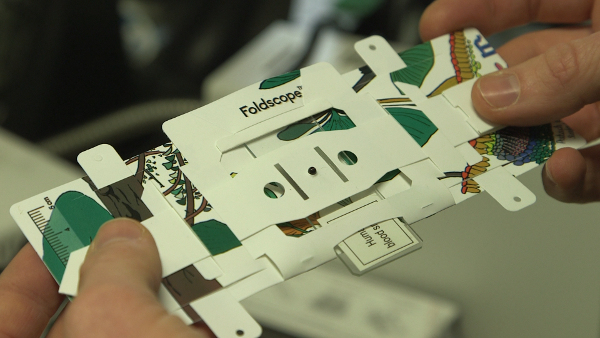Boosting scientific temper among kids, the ‘one dollar foldscope’ is creating ripples in the education sector in the city due to its portability and ease of use. The handy microscope, which folds like an origami piece, was first developed by an Indian professor at Stanford in the US in 2014.
Manu Prakash, while working as an assistant professor of bioengineering at
Stanford University, created the microscope along with his colleagues. The one dollar microscope is priced at around Rs 500 in India with customs fees and is equipped with a lens providing nearly 70 per cent clarity compared to conventional microscopes available in the market, which start at Rs 18,000.
The Foldscope
is now being endorsed by the central government’s department of
biotechnology and was introduced to research students and scientists at
Agharkar Research Institute (ARI) here on Friday.
“Recently, my niece woke up in the morning to find mold on a stale piece of bread. She took a picture of it using the Foldscope and created a greeting card to send morning wishes to her friends. When I curiously enquired, she said the mold looked beautiful,” said Jyotika Rajwade, a faculty member at ARI.
Rajwade said that this is how the Foldscope can play an important role in generating curiosity in young minds and boosting scientific understanding among them. “It has changed the way she explores things around her. All she needs is a foldscope and a camera phone to explore the microscopic elements around her,” Rajwade added.
The institute also conducted a workshop for its students to introduce the device. Anupama Engineer, a project scientist at the department of biotechnology, said, “I was already aware of the Foldscope and its uses. It is a really useful tool considering its size and ability of function, especially on the field.”
Engineer said the easy-to-carry tool is useful in taking first samples. “The images are not as clear as you would like them to be, but I am excited to use it on the field for initial observations. The Foldscope could open new avenues as it will allow in collecting samples from the field itself rather than taking something all the way to the laboratory.”
Talking about his experience viewing a feather under the lens, Saurabh Gaikwad, a senior research fellow, said, “I used one Foldscope from the lab. Though the Foldscope has its limitations, a cell phone camera allows zooming and magnification of images.”
Gaikwad said that the tool is very easy to carry. “All you have to do is insert the slide and look for a bright light source like the sun or the flashlight from a cell phone to see the microscopic images,” he said.
Karthick Balasubramanian, a researcher at ARI, said, “This is the first time that the Foldscope was introduced on such a large scale for students in the city. The government especially wants this gadget to be promoted for students of rural areas, where affordability is an issue.”
Balasubramanian added that many students and faculty members have been able to discover and explore species in pollens, food items and other objects around them using the compact microscope. “The ease of access can help unlock potential for more discoveries apart from the popularisation of scientific research,” he summed up.
Source: PuneMirror
Image Courtesy: Neowin
You may also like
-
New Heat-Based Approach To Cancer Treatment Can Reduce Chemotherapy Doses
-
Scientists Take A Major Step Towards Unification Of Classical & Quantum Gravity
-
India Graphene Engineering and Innovation Centre (IGEIC) Under the Vision of Viksit Bharat@2047 Launched
-
New High-Performance Gas Sensor can Monitor Low Level Nitrogen Oxides Pollution
-
Antidepressant Drug can be Repurposed for Treating Breast Cancer
